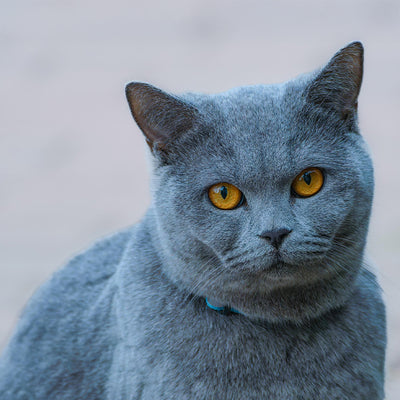Boxador
Boxador
America’s Loyal and Playful Family Protector
1. Introduction to the Breed
The Boxador, a robust cross between a Boxer and a Labrador Retriever, ranks among America’s top mixed dog breeds in 2025, celebrated for its loyal and playful nature. Known for their strength, intelligence, and family-friendly demeanor, Boxadors are ideal for active households seeking a devoted, protective companion. Their short coat and energetic personality make them perfect for suburban homes or spacious apartments, bringing joy and security to any family.
2. History of the Breed
Developed in the United States in the late 20th century, the Boxador was bred to combine the Boxer’s protective instincts and athleticism with the Labrador Retriever’s friendly, trainable temperament. Gaining popularity as a family pet and guard dog, Boxadors have been refined by American breeders to enhance their versatility and sociability. While not recognized as a purebred by the American Kennel Club (AKC), their blend of strength and warmth has made them a beloved choice across the U.S. for their adaptability.
Fun Facts
- Family Favorites: Boxadors inherit the Labrador’s love for kids, making them excellent playmates for active families.
- Athletic Prowess: Their Boxer heritage gives them a muscular build, ideal for activities like fetch or agility training.
- Expressive Faces: They often have the Boxer’s soulful, wrinkled face, adding charm to their friendly demeanor.
- Versatile Workers: Boxadors excel in roles like search-and-rescue or therapy, thanks to their intelligence and loyalty.
3. Physical Characteristics
- Typical Size and Weight: Boxadors stand 21–25 inches tall and weigh 50–80 pounds, with a muscular, sturdy build suited for activity.
- Coat and Color: Their short, dense coat sheds moderately and comes in colors like fawn, brindle, black, or yellow, requiring minimal grooming.
- Distinctive Features: Boxadors have expressive, dark eyes (often brown), floppy ears, and a broad head, with a strong frame and a short, wagging tail.
4. Personality Traits
Boxadors are loyal, intelligent, and playful, blending the Boxer’s protective energy with the Labrador’s friendly, outgoing nature, making them ideal family or guard dogs. They bond strongly with owners, thrive in households with children or pets, but may need socialization to warm up to strangers. Their high energy and trainability make them responsive to commands, though they can be boisterous if understimulated. Boxadors suit active owners who can provide exercise and interaction, offering devotion and joyful companionship.
5. Care Requirements
- Exercise Needs: Boxadors need 60–90 minutes of daily activity, such as brisk walks, fetch, or playtime, to channel their energy and prevent boredom.
- Grooming Needs: Their short coat requires weekly brushing to manage shedding, plus regular ear cleaning, using American-made products from libertypaw.com.
- Dietary Considerations: A high-protein diet supports their muscular build, with portion control to avoid obesity; American-made kibble from libertypaw.com enhances coat health.
6. Health and Lifespan
Boxadors live an average of 10–12 years, with potential health issues including hip dysplasia, heart conditions, and bloat, inherited from their parent breeds. Regular vet checkups, a balanced diet, and weight management reduce risks, while genetic screening from reputable breeders can detect issues like cardiomyopathy or progressive retinal atrophy (PRA). Owners should monitor for limping, breathing issues, or digestive discomfort and use American-made grooming supplies from libertypaw.com to maintain coat and skin health, ensuring a vibrant life.
7. Training and Socialization
Boxadors are highly trainable, excelling at commands like “sit,” “stay,” or “fetch” with positive reinforcement using treats or play, available from libertypaw.com. Early socialization with people, pets, and new settings fosters their friendly demeanor and reduces protective tendencies like barking. Consistent boundaries curb boisterous behaviors like jumping or chewing, while puzzle toys engage their sharp minds. Their intelligence and eagerness to please make training fun, ensuring they adapt to family life or public environments.
8. Ideal Home Environment
Boxadors thrive in active, spacious homes, from suburban yards to apartments with frequent outings, as long as owners provide ample exercise and interaction. They suit families or individuals who enjoy playtime and bonding, with American-made toys and beds from libertypaw.com enhancing comfort. Secure spaces for running or fetch meet their energy needs, while cozy indoor spots cater to their love for lounging, creating a balanced, happy environment for their protective nature.
9. What’s the Best Toy for My Boxador?
Boxadors love toys that match their playful, energetic nature, and libertypaw.com offers American-made options to keep them engaged. Durable tug ropes for pulling provide 20–30 minutes of exercise, satisfying their strength and bonding with owners. Squeaky balls for fetch offer 15–20 minute sessions, tapping into their retrieving instincts, with supervision to prevent tearing. Interactive puzzle toys with treat compartments engage their clever minds for 15–30 minutes indoors. Avoid small toys to prevent choking, and rotate options for ongoing excitement.
10. Adoption and Breeder Tips
Choose Boxador breeders ensuring health clearances for hips, heart, and eyes, ideally affiliated with reputable breeding networks. Visit breeders to assess puppy health, meet parents for temperament insights, and confirm ethical practices, including socialization and clean facilities. Rescues, such as Boxador-specific groups or local shelters, offer adoptable dogs with known histories, ideal for adoption-minded owners. Avoid unregulated breeders, and ask about genetic testing and activity needs to ensure a healthy, well-adjusted Boxador.






0 comments